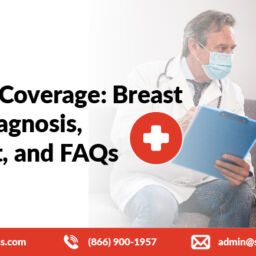
Medicare and Medicaid are two US government programs designed to provide access to healthcare. The terms Medicaid and Medicare are often confusing or used interchangeably. They seem very similar, but these two programs are actually very different.
Its own laws and policies regulate each, and programs are usually designed for different groups of people. However, it is possible to be eligible for both programs.
For choosing the right one for your needs, it is essential to understand the meanings of Medicare and Medicaid.
What is Medicaid?
Medicaid is a government program that provides free or low-cost health insurance to low-income families and individuals. While the federal government sets guidelines for the Medicaid program, each state operates its own program. Therefore, eligibility and benefits may vary significantly from one state to another. Both state and federal governments jointly fund the Medicaid program.
What does Medicaid cover?
Each state makes the final decision on what their Medicaid plans offer. However, they must meet specific federal requirements to receive federal matching funds.
Not all insurance providers should accept Medicaid. Beneficiaries should check their coverage before receiving health care.
Those people who do not have private health insurance can seek help at a federally qualified health center. These provide coverage on a sliding scale based on the income of the individual.
Federally Qualified Health Centers (FQHC) provisions include:
- Vaccines for children
- Prenatal care
- Doctor services
- Rural health clinic services
- X-ray and laboratory services
- Family nurse practitioner and pediatric services
- Nursing services for people of 21years +
- Nurse-midwife services
- Ambulatory and FQHC services
- Home healthcare for people eligible for nursing services
- Diagnostic, Early and periodic screening, and treatment (EPSDT) for under 21s
- Family planning services and supplies
What Medicaid Does Not Cover
Medicaid covers several medical cares, but the program typically does not cover certain goods and services. For example, Medicaid does not cover prescription drug costs. However, those people who are eligible for Medicaid may be able to pay their premiums through Medicare Part D, Medicare’s prescription drug plan.
Below are some additional health care costs not covered by Medicaid:
- Missed appointments
- Dental services
- Annual or regular physical examination
- Cosmetic surgery
- Over-the-counter medicines or supplements
- Medical Services Provided Outside the US
- Care in custody or assistance in activities of daily living
More information about goods and services not covered by Medicare, as well as exceptions to those exclusions, can be found on the Medicare official website. The Medicaid website includes a list of goods and services that all states must cover and a list of benefits that states can choose to cover or not cover.
What does Medicaid cost?
States have the right to charge premiums and other cost-sharing for Medicaid nominees. Some out-of-pocket costs may include reimbursement, co-insurance, deductibles, and others. However, a maximum out-of-pocket cost is imposed, and states may choose to charge higher-income people within the program. With the Medicaid program more broadly, cost regulations vary by state, which is why organizations have conducted surveys to find out what Medicaid regulations are for costs in states.
The federal government has recognized that some vulnerable groups should have no out-of-pocket spending through Medicaid. There is no additional cost for people using the Medicaid program, especially for emergency services, family planning, pregnancy-related services, or preventive services for children.
Eligibility for Medicaid
You may qualify for low-cost or free care through Medicaid, depending on income and family size.
In several states, Medicaid provides health coverage for some low-income people, pregnant women, families, children, the elderly, and people with disabilities. In some states, the program covers low-income adults below a certain income level.
Even if you were told that you had not previously qualified for Medicaid, you might qualify under the new rules. You can checkout your eligibility in 2 ways:
- Go to your state’s Medicaid site. Scroll the drop-down menu at the top of this page to select your state. You can apply now and find out if you are eligible or not. If you qualify, coverage can begin immediately.
- Fill out an application in the health insurance market. When you complete the application, we will tell you which programs you and your family are eligible for.
How to apply for Medicaid
Since each state governs its own Medicaid program, eligibility varies from one state to another. If you have any questions about eligibility, contact your state Medicaid agency. Or, apply online on your state Medicaid agency website to see if you qualify.
What is Medicare?
Medicare is funded by the government and provides medical coverage for people over 65 years of age. You are eligible for Medicare if you:
- Are handicapped and have been receiving social security disability benefits for two years
- Disability pension from Railroad Retirement Board
- Have Lou Gehrig’s disease (ALS)
- Have kidney failure (end-stage kidney disease) and receive dialysis or have had a kidney transplant
- This health insurance can be used as supplemental backup coverage or primary insurance.
- Medicare can be used to pay for medical care and long-term care, but it may not cover all your medical expenses.
Medicare is funded by taxes and, in some cases, premiums that are taken out of your Social Security check or what you pay.
What Medicare Covers
Medicare has five main options that provide health benefits for people 65 and older and people with disabilities and some chronic conditions:
- Medicare Part A provides basic hospitalization coverage.
- Medicare Part B includes outpatient care such as doctor visits and diagnostic tests.
- Medicare Part C (Medicare Advantage) is a private option that is the sum of Part A and Part B coverage and provides additional benefits.
- Medicare Part D covers prescription drug coverage.
- Medicare Supplement (Medigap) covers out-of-pocket costs such as copays, co-insurance, and deductibles.
When it comes to health care, it is essential to know what is covered and what is not. Since there are many different plans for Medicare, it cannot be apparent to know which plan will give you the right coverage. Luckily, some tools can make it easier for you.
Medicare is an insurance plan offered by the federal government to people 65 years of age and older and people with disabilities, and people with end-stage kidney disease (ESRD), a type of kidney failure.
Who is eligible for Medicare?
You are entitled to Medicare if you are at least 65 years old and have been a US citizen or permanent legal resident for the past five years. Medicare also covers some disabled people under the age of 65. People who have Social Security disability insurance usually become eligible for Medicare after a two-year waiting period, also people with end-stage kidney disease (permanent renal failure) are automatically enrolled upon signing up, and those with amyotrophic lateral sclerosis are eligible the month disability begins.
Who pays for Medicare?
Most of the money for Medicare comes from:
- Payroll tax under the Federal Insurance Contribution Act (FICA)
- Self-Employment Contribution Act (SECA)
Typically, the employee fulfils half of this tax, and the employer pays the other half. This money goes to a trust fund that the government uses to reimburse doctors, hospitals, and private insurance companies.
Additional funding comes from premiums, deductibles, co-insurance, and copayments.
Is Medicaid part of Medicare?
Medicare and Medicaid (called medical assistance in Minnesota) are separate programs. Medicaid is not part of Medicare.
Here’s how Medicaid works for people 65 and older: It is a federal and state program that helps pay for health care for people with limited incomes and assets. A fundamental difference is that Medicaid covers certain benefits or services that Medicare does not like for nursing home care or transportation to medical appointments (depending on your state and your qualifications).
If you are 65 year old or more older and you are double eligible for Medicaid and Medicare, you can get all your services in one plan. In Minnesota, the plan is called Minnesota Senior Health Options (MSHO). An MSHO plan includes Medicare, prescription drugs, dental care, long-term care, and home and community-based services.
For more information, visit your state’s Medicaid / Medical Assistance website or medicare.gov.
Since 2012, Simpler Horizons has been servicing the needs of thousands of Medicare beneficiaries. We represent multiple Medicare Advantage & Medicare Supplement companies.
You can call us Phone: (866) 900-1957 TTY 7-11 (M-F 9A-5P). By calling the number above you will be directed to a licensed insurance agent. Medicare has neither reviewed nor endorsed this information.
















